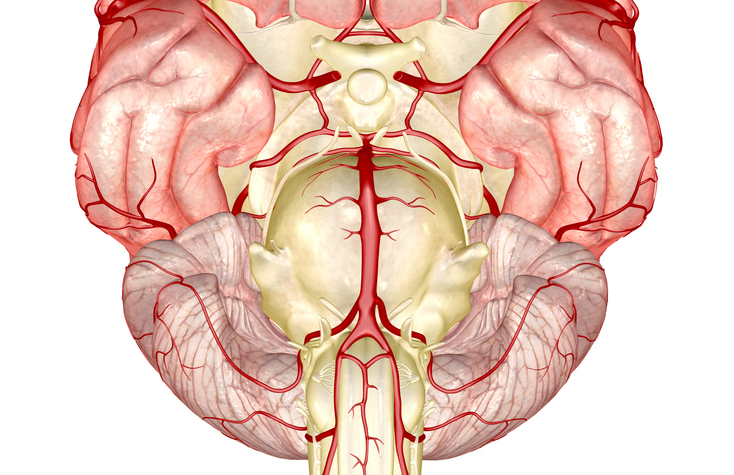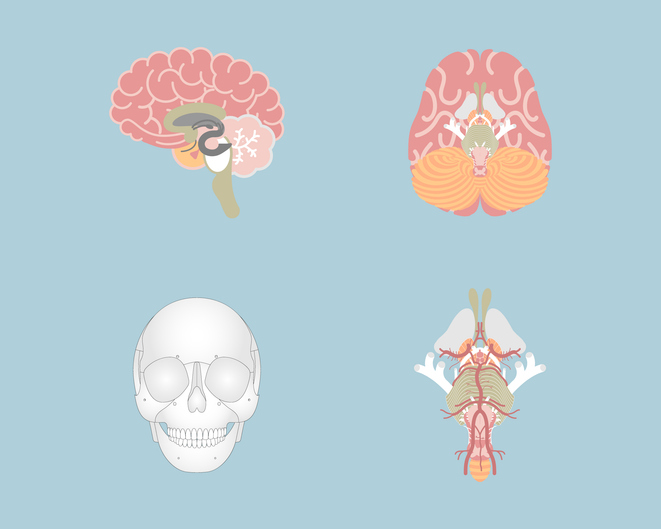The Circle of Willis – What You Need to Know

By Joy Stephenson-Laws, JD, Founder
When it comes to protecting our health, sometimes knowing about one of the smallest and least-known structures in our bodies can dramatically enhance what is known as our healthy life expectancy. A good example of this is a very small structure (an inch or less in diameter) located deep in the base of our brains near the pituitary gland and optic nerves known as the Circle of Willis. It is named after Thomas Willis who described it in the 17th century.
As its name suggests, it is a group of arteries that connect with each other in the shape a circle and supply critical blood flow to our brains. Arteries supply oxygen and nutrients throughout your body (including, critically, your brain). I like to think of it as an arterial traffic circle (or rotary, depending on where you live) that helps make sure your arterial blood supply reaches everywhere it needs to within your brain.
There also can be differences in this structure from person to person. In fact, only about a third of people have what could be described as a “classic” Circle of Willis. Luckily, for most people with these variations, their bodies compensate for it.

The Circle of Willis makes sure arterial blood can nourish our brains and also helps to protect our brains by creating what you could call an “arterial redundancy.” So if any part of the Circle of Willis becomes clogged or fully blocked, another of the circle’s arteries can allow blood flow to ensure the brain is not starved of oxygen or nutrients. This redundancy may protect you from suffering a stroke due to a blocked artery (also known as an ischemic stroke). Consider it as a type of safety valve.
This structure, however, is a common location for brain aneurysms, which occur when part of the artery wall weakens and creates a “bulge.” These bulges can rupture and cause serious health risks. Fortunately, most brain aneurysms don’t rupture and don’t cause health symptoms and are usually found when doctors do tests for other health conditions.
If an aneurysm develops in the Circle of Willis, it could impact your optic nerves, impairing your vision. If the aneurysm is close to your pituitary gland, it may affect how well it does its job in helping maintain blood pressure and metabolism. These aneurysms could also result in fatigue, headaches and trouble concentrating. If one should rupture in the Circle of Willis, symptoms could include weakness, numbness, a stiff neck and a severe headache. If treated early, any harm can usually be avoided so it’s important to get medical help immediately if you experience a sudden and severe headache.
There are various tests that your doctor can order to check if there are any issues with your Circle of Willis, including those that may be caused by conditions such as stroke or blockage of the carotid arteries in your neck. These include:
- Circle of Willis Scan, which uses CT Technology to provide detailed and three-dimensional images of your brain’s blood supply
- Carotid artery angiogram, which looks specially at the blood vessels in your neck that supply blood to your brain
- Cerebral angiogram, which looks at the blood vessels in both your neck and brain
- Ultrasound of carotid arteries to see how well blood is flowing through the carotid artery
How to be proactive.
If tests show that you do have an incomplete Circle of Willis, it is very important to let your healthcare providers know. For example, this may be especially important information to communicate to your doctors if you need to have surgery and will allow them to take the necessary steps to reduce your risk for complications during surgery. (Remember, there are more people with an incomplete Circle of Willis than those with a complete Circle of Willis. As a result, it is probably a good idea to be aware of this issue).

You can also take steps to reduce your risk for any conditions that could harm your cardiovascular system. This includes the following:
- Eating a nutrient-rich, anti-inflammatory diet which includes appropriate amounts of fresh fruits and vegetables
- Avoiding a pro-inflammatory diet full of processed foods
- If you are a smoker, quitting right now
- Appropriate amounts of physical activity
- If you drink alcohol, drinking in moderation - moderation may be less than you think (click here to find out how much is too much)
- Getting good quality sleep
- Managing your stress levels
- Monitoring your blood pressure
- Getting routine physicals to screen for health issues such as diabetes and heart disease
I would also suggest that you do what you can to give your brain as much nutritional support as possible by taking the following to heart:
- Magnesium is known to help improve headaches and sleep and is good for overall brain health
- Vitamin B complex often helps with brain “fog”
- Including brain-healthy foods like fish, walnuts, blueberries and broccoli in your diet
And last, but certainly not least, be sure to talk with a competent health care practitioner about getting a nutrition blood test to make sure your body is getting the amount of nutrients needed help keep your cardiovascular system healthy.
Enjoy your healthy life!
Disclaimer: This article is not intended to provide medical advice. Please consult with your doctor or another competent healthcare practitioner to get specific medical advice for your situation.
The pH professional health care team includes recognized experts from a variety of health care and related disciplines, including physicians, attorneys, nutritionists, nurses, and certified fitness instructors. This team also includes the members of the pH Medical Advisory Board, which constantly monitors all pH programs, products, and services. To learn more about the pH Medical Advisory Board, click here.







